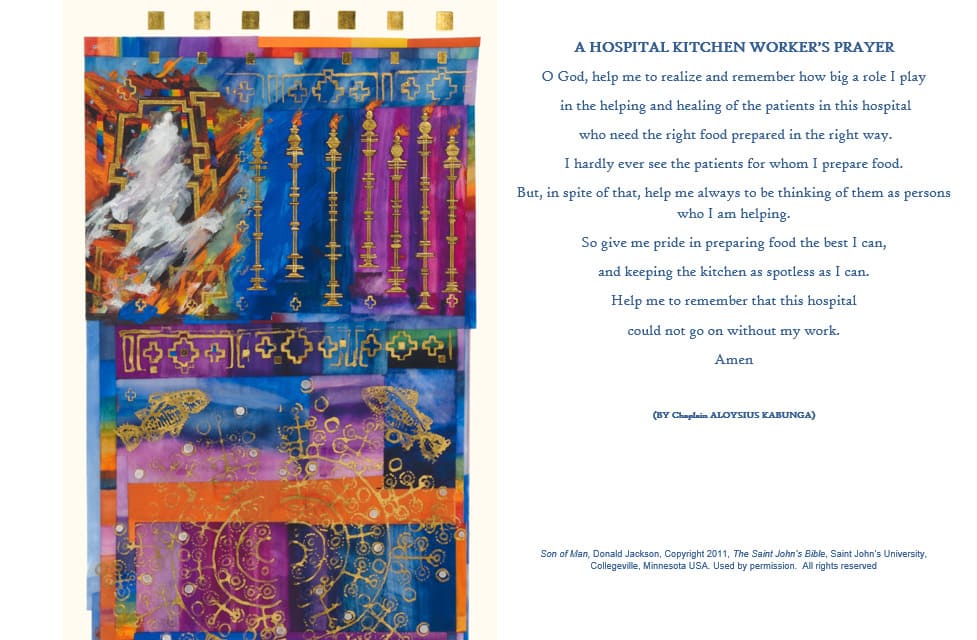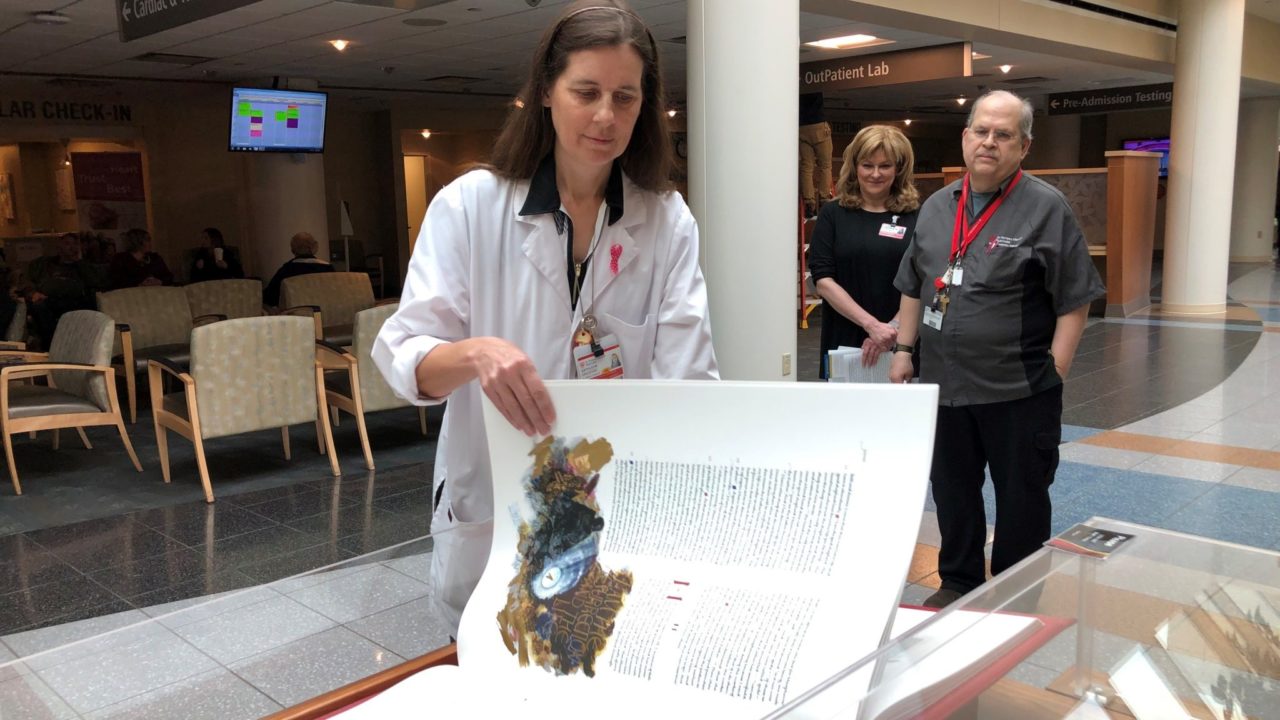The Saint John’s Bible Leaves Its Mark on 150th Anniversary of St. Peter’s Health Partners
With the Heritage Edition on hand, staff and community “want to be a part of it”
The decision to host The Saint John’s Bible Heritage Edition is never taken lightly. Organizers must think through programming, logistics, community outreach, and more to ensure they maximize their time with the Bible and see it put to good use in their communities. For St. Peter’s Health Partners in Albany, New York (part of Trinity Health), hosting two volumes at once meant double the responsibility – but their efforts have been richly rewarded.

Trinity Health’s loan program, which sees volumes from The Saint John’s Bible shared among its 93 constituent hospitals, coincided with St. Peter’s individual plans to undertake A Year With The Saint John’s Bible. With both Volume 5: Prophets and Volume 6: Gospels & Acts on hand, St. Peter’s has been able to undertake a wide variety of programming appealing to multiple faith traditions.
Maureen Cavanagh, Director of Mission, says that the health system’s selection of volumes was very carefully thought out. During a pre-hosting presentation of Volume 7: Letters & Revelation, one of the hospital’s rabbis was “just jumping out of his skin seeing some of the illuminations that hearken back to stories in the Hebrew scriptures,” she says. “He read the Hebrew lettering that’s in there and he was really, really excited about it. For that reason we decided that we would choose a volume not based on how many terrific, mind-blowing illuminations were in it, but rather one that would appeal to the broadest of the religious tradition.” Prophets was the natural choice, firmly in line with the hospital’s mission to reach a community of diverse faith traditions.
“We are making a concerted effort at our interfaith partnership and within the community,” Cavanagh says. The St. Peter’s network includes five hospitals, seven long-term care facilities, four assisted living facilities, two memory care facilities, and a hospice, so its community is extremely broad-ranging in the Albany region.
Like many health systems, St. Peter’s has grown to its current scope due to mergers, so administrators are ever conscious of their varied constituencies. “We’re trying to reach out, be partners with our local institutions and to strengthen those relationships,” says Cavanagh. “A couple of our hospitals were not Catholic at the time of the merger and they’re not Catholic now, but I’ll tell you they were head over heels in love with The Saint John’s Bible,” she adds.
Commemorating a Century and a Half of Service
St. Peter’s Hospital was established in 1869, and a celebration on All Saints’ Day (Nov. 1) invited the community to look back on the hospital’s role in the history of the Capital Region, including an expanded Wall of History illustrating the hospital’s growth over time. Other celebrations included gatherings for community figures and St. Peter’s staff.
The Saint John’s Bible was exhibited at the 150th anniversary event, exemplifying the hospital’s spiritual outreach initiatives. “People turned pages, touched it, admired it, asked questions about it,” Cavanagh says.

Outside of events at the hospital, The Saint John’s Bible has been requested at nursing homes, schools and other facilities within the system for lectures, presentations, and more. Taking advantage of image licensing rights, a key feature of the A Year With The Saint John’s Bible program, St. Peter’s chaplains wrote prayers for bespoke prayer cards featuring art from The Saint John’s Bible. Cavanagh says that wherever it’s seen, she receives requests for exhibition and information.
Like many institutions, St. Peter’s carefully weighed the value of bringing The Saint John’s Bible to its facilities. Their verdict? “Well, it’s definitely worth it,” Cavanagh says. “I wondered if it would be worth it or not. It was hard to imagine just getting a presentation about it. But it’s really been more than worth it.
Cavanagh relates a story of being stopped in the hospital cafeteria by a neurosurgery staff member who wanted to thank her for an interfaith program centered on sacred scriptures the health system had hosted. “He said that it was really fantastic, and we talked more about The Saint John’s Bible and how and why it came about.
“That’s the kind of thing that happens all over the place,” she adds. “People just start talking about how they liked it very much and they want to be a part of it somehow.”
Click here to learn more about bringing the Heritage Edition to your community through A Year With The Saint John’s Bible.


